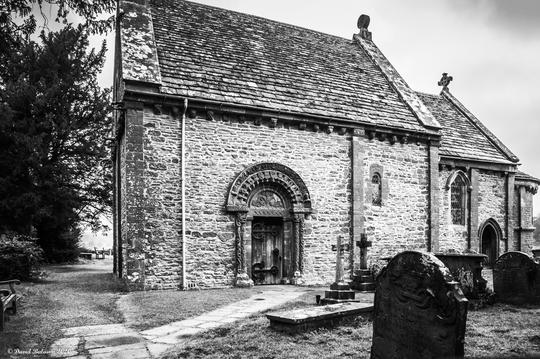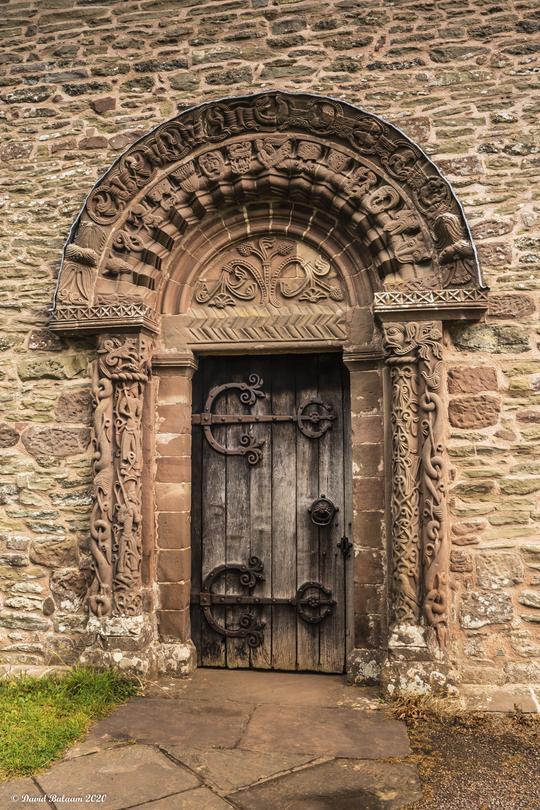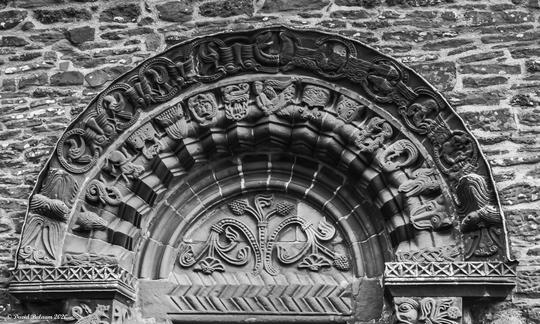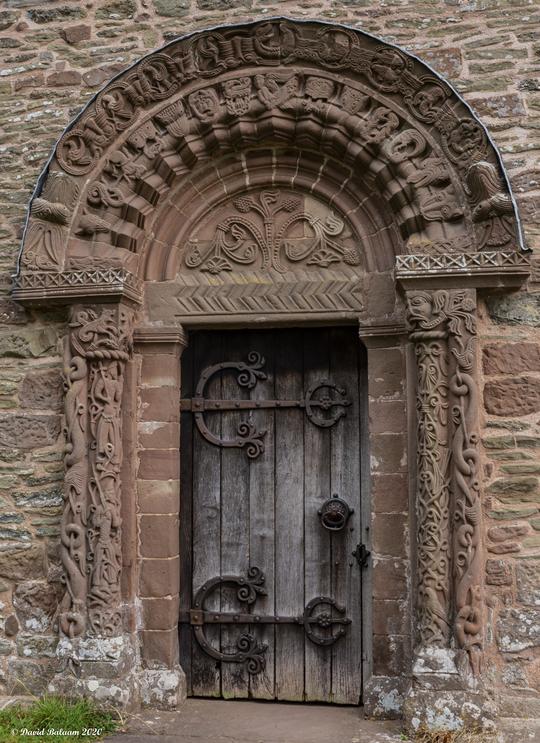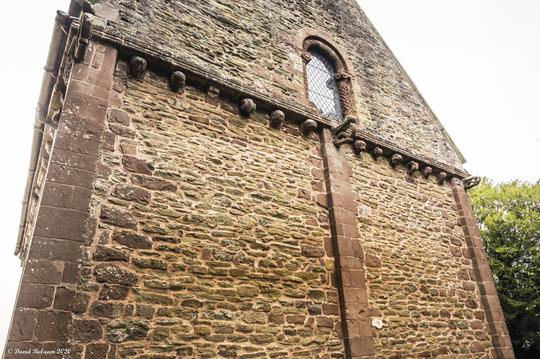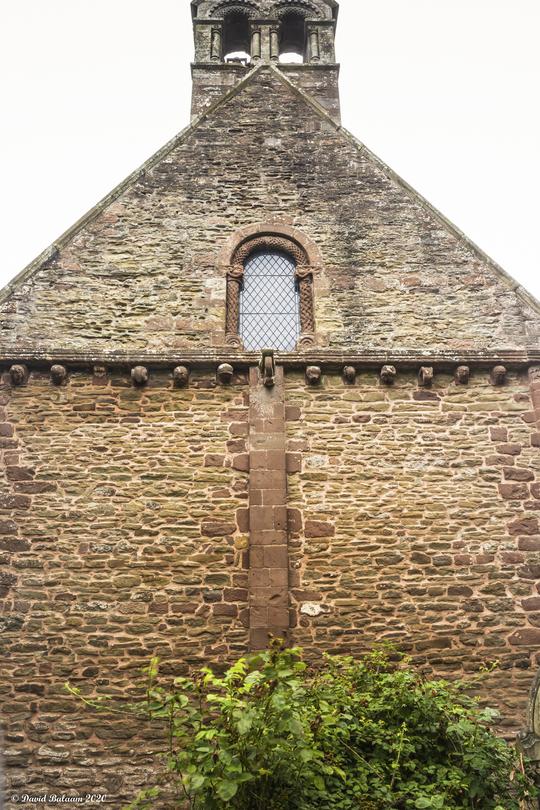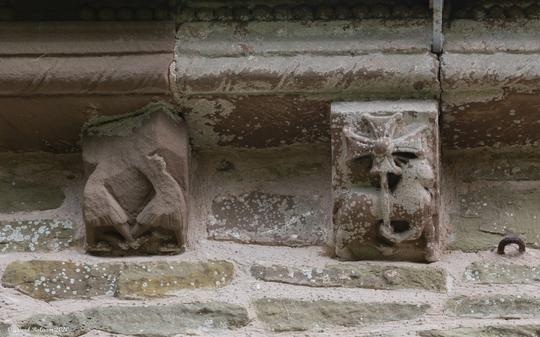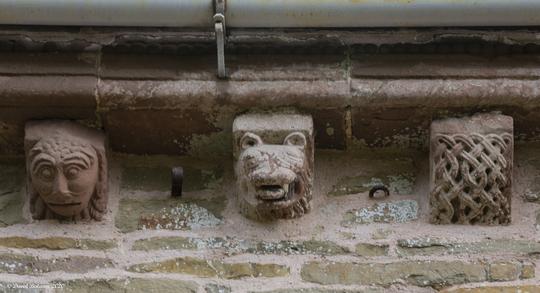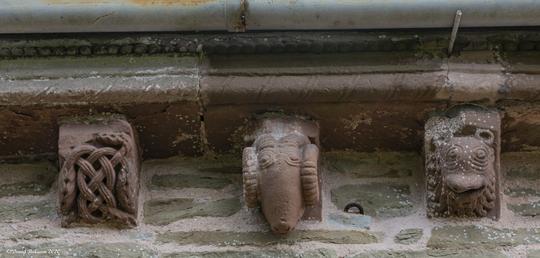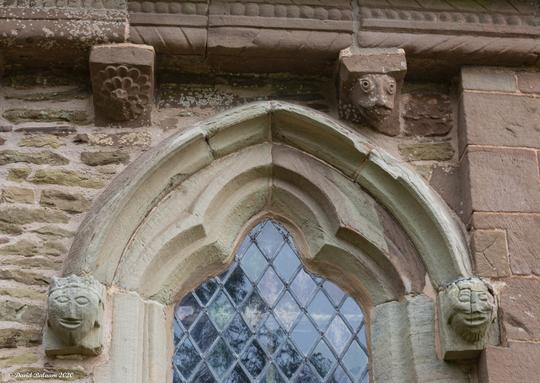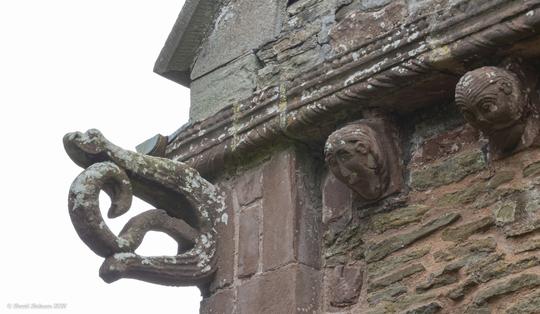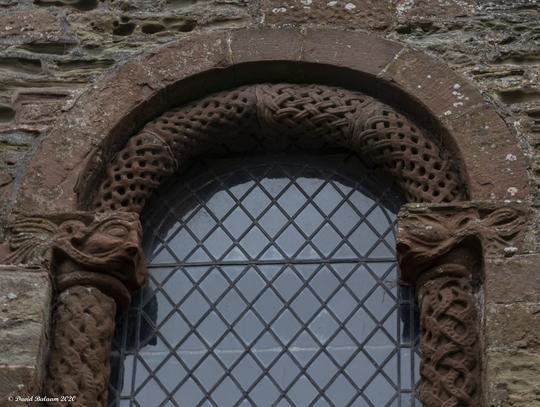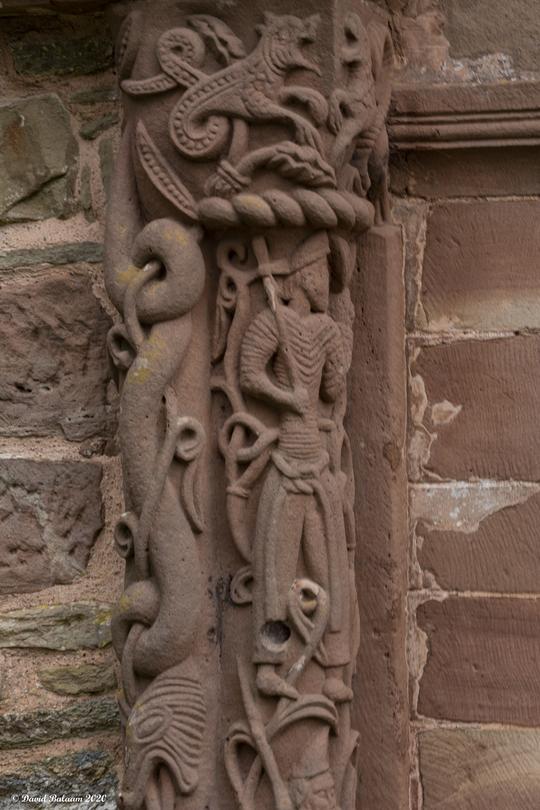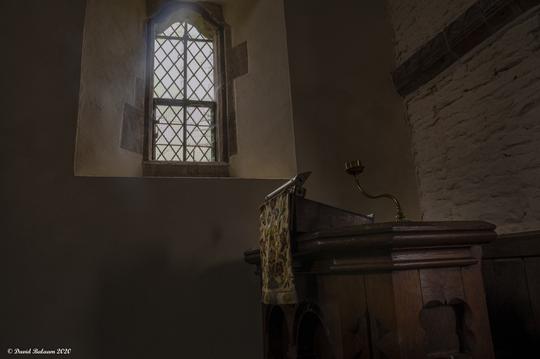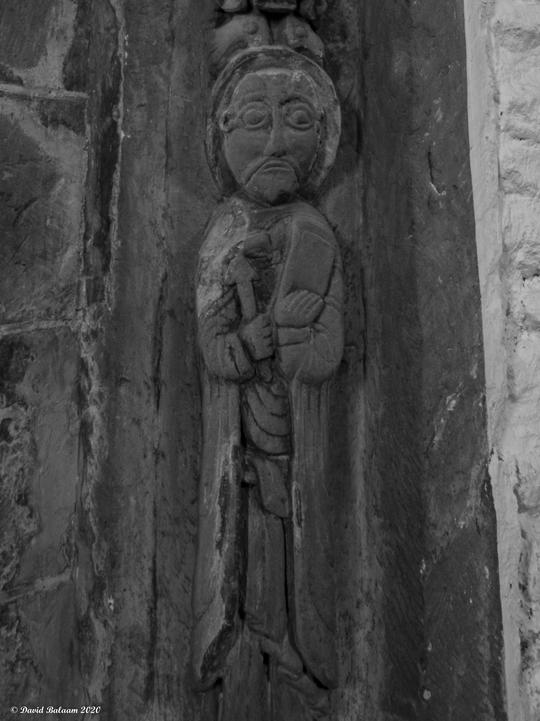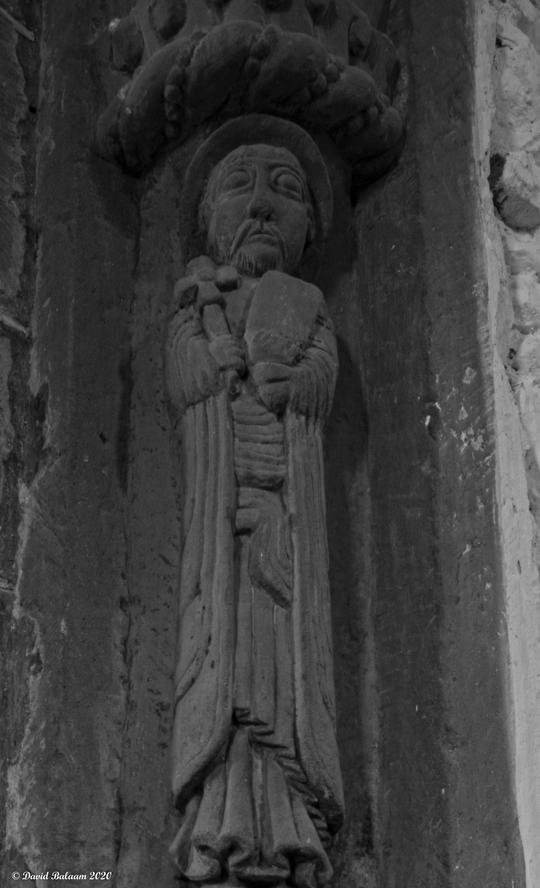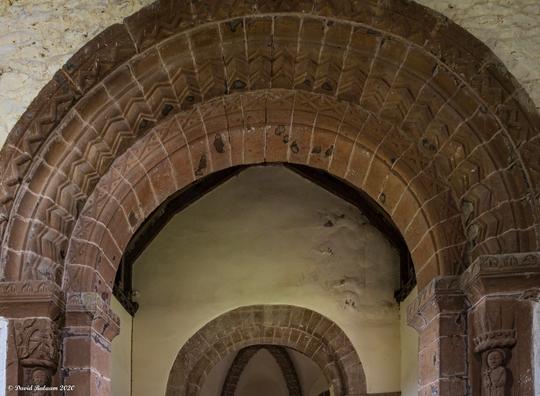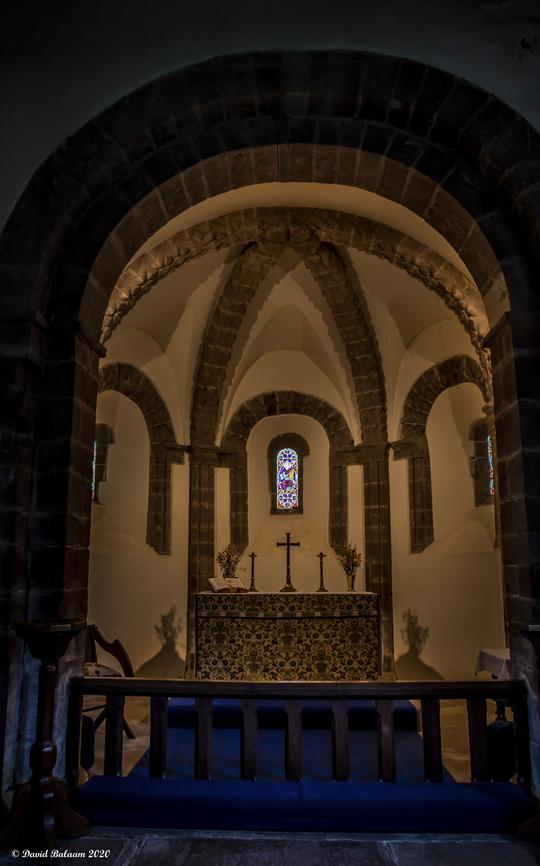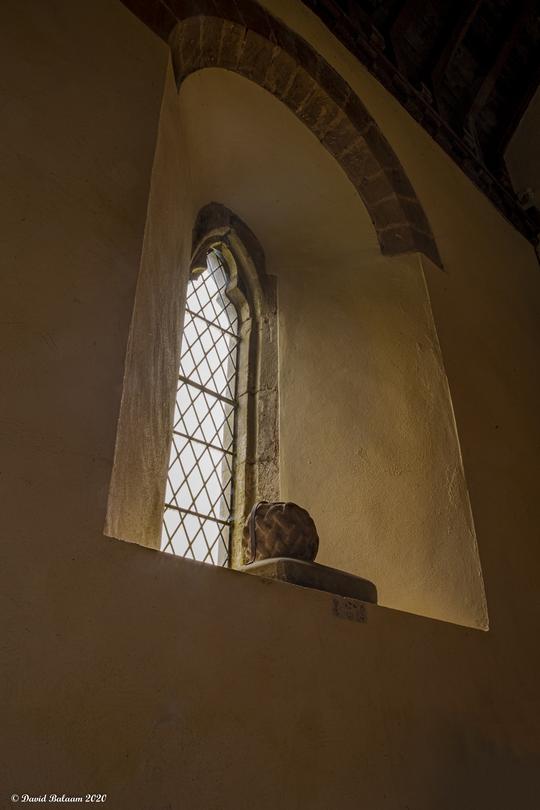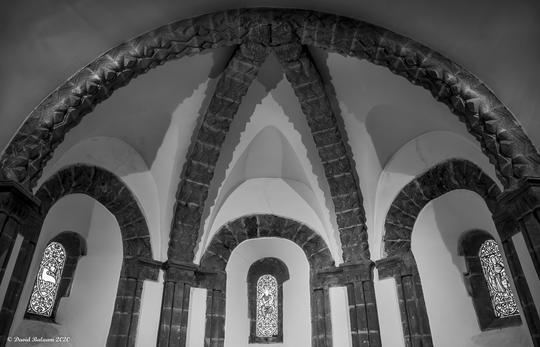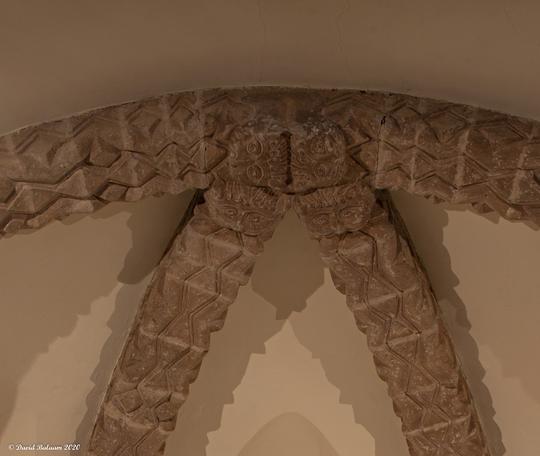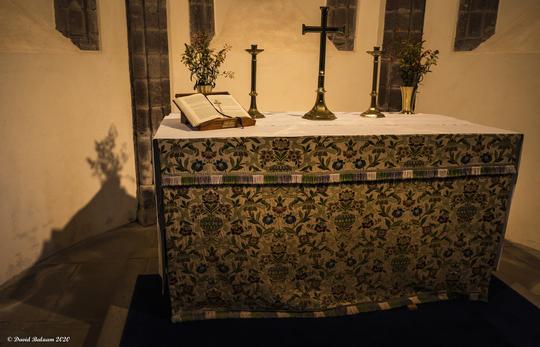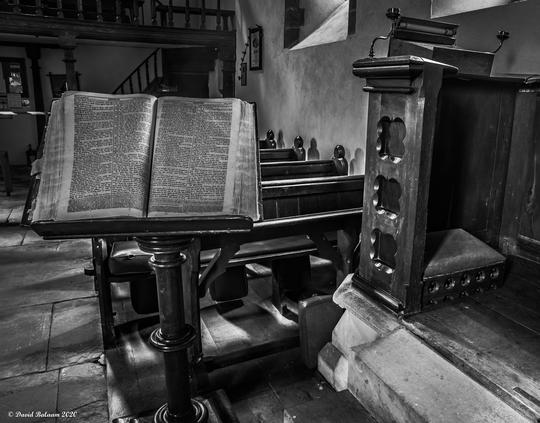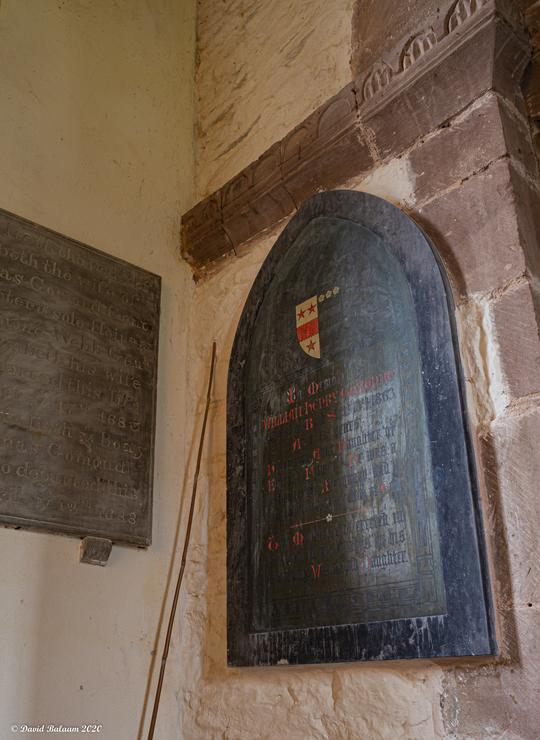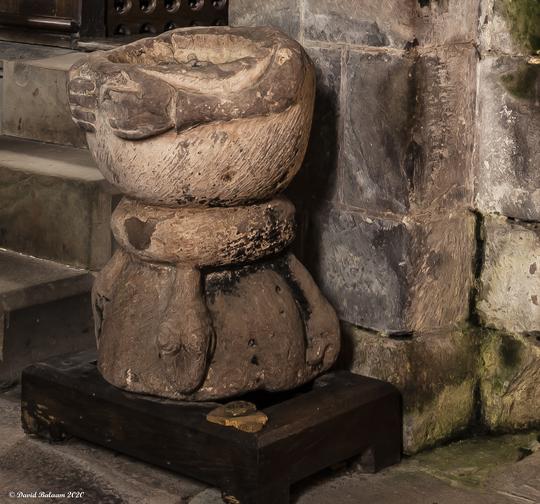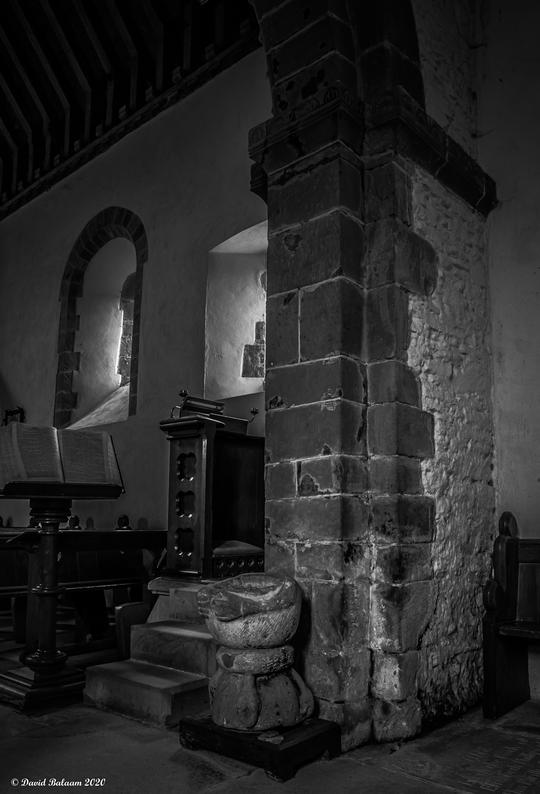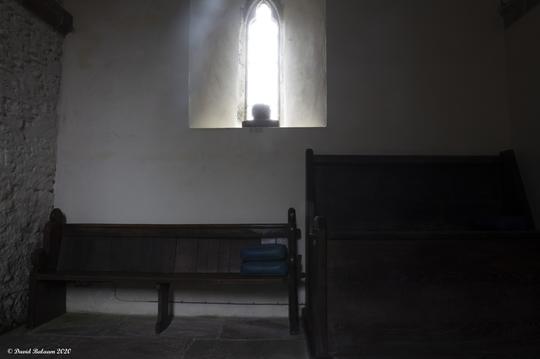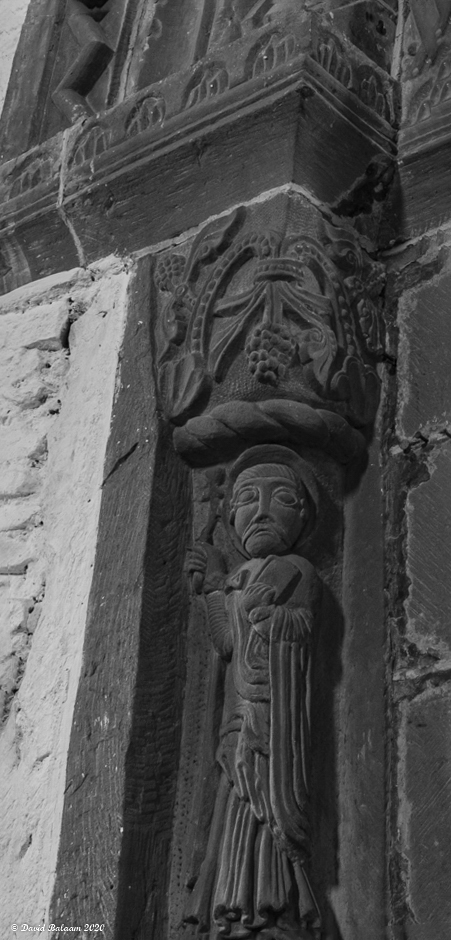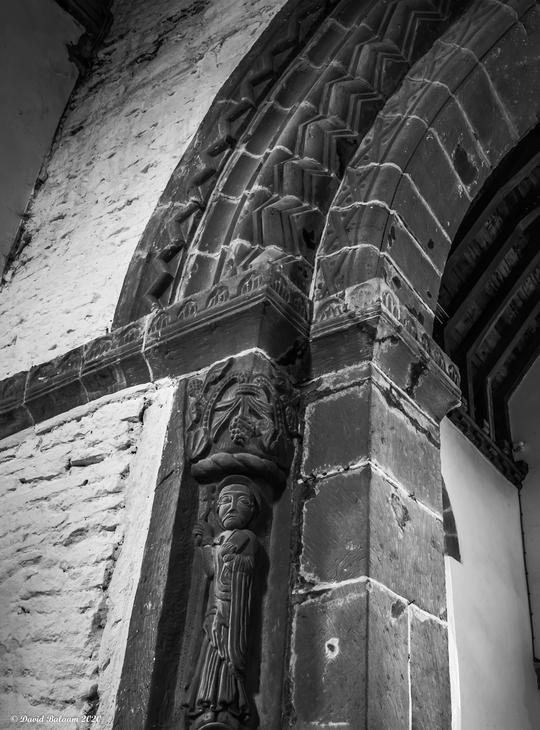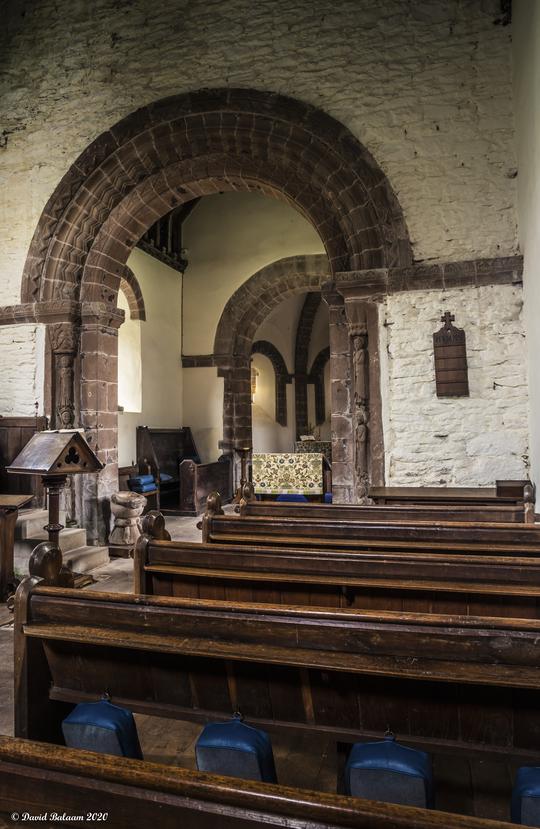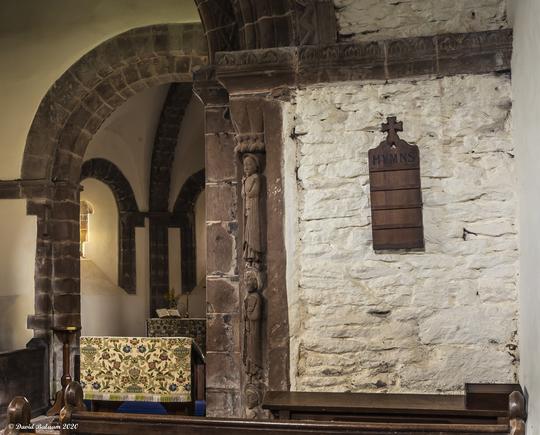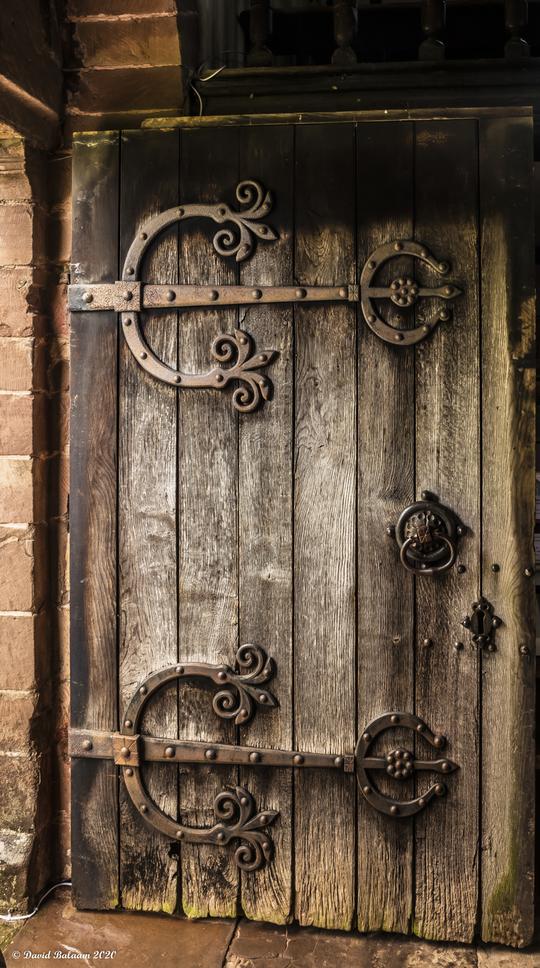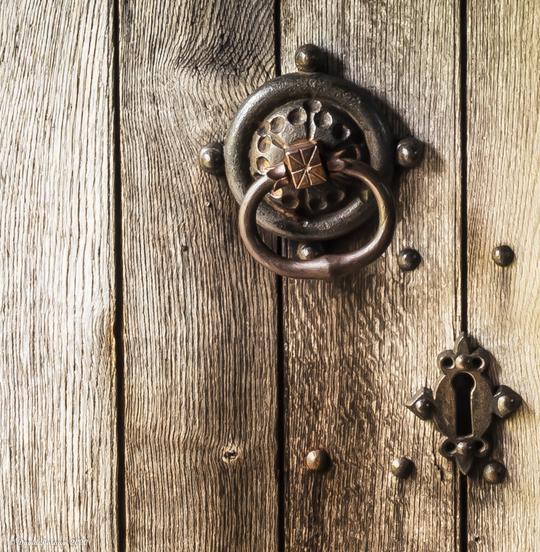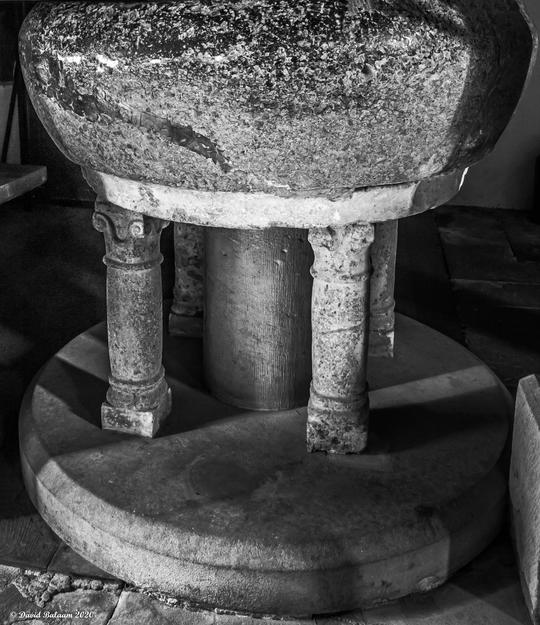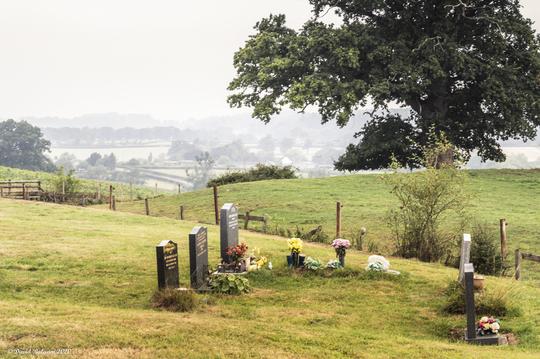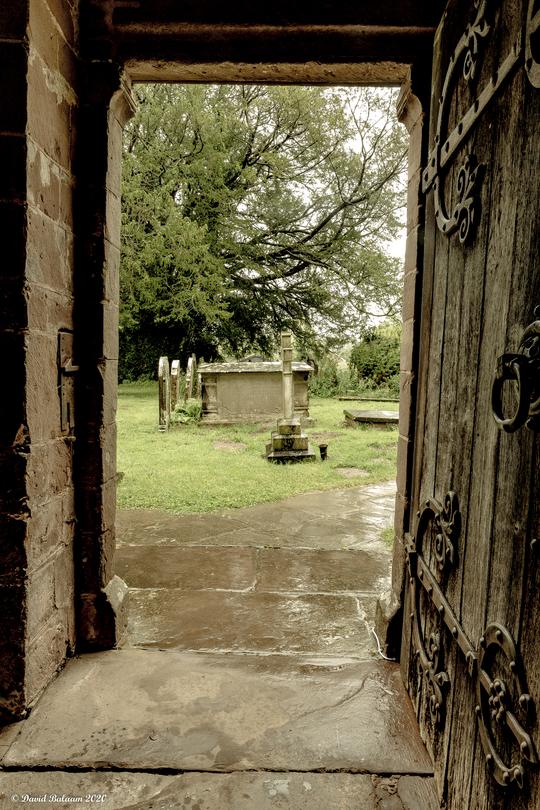St Mary and St David, Kilpeck
The church was built around 1140, and almost certainly before 1143 when it was given to the Abbey of Gloucester. It may have replaced an earlier Saxon church at the same site, and the oval raised form of the churchyard is typical of even older Celtic foundations. Around the 6th and 7th centuries the Kilpeck area was within the British kingdom of Ergyng, which maintained Christian traditions dating back to the late Roman period. The possibility of the site holding Roman and even megalithic remains has been raised, but is unproven. The plan of the church, with a nave, chancel, and semicircular apse, is typical for the time of its construction, the Norman period. It was originally dedicated to a St David, probably a local Celtic holy man, and later acquired an additional dedication to Mary from the chapel at Kilpeck Castle after it had fallen into disrepair. The south door has double columns. The outer columns have carvings of a series of snakes, heads swallowing tails. In common with most of the other carvings, the meaning of these is unclear, but they may represent rebirth via the snake's seasonal sloughing of its skin. The inner right column shows birds in foliage; at the top of the right columns is a green man. The inner left column has two warriors who, unusually, are in loose trousers. The outer sections of the arch above the doorway show creatures which can be interpreted as a manticore and a basilisk, and various other mythical and actual birds and beasts. The semicircular tympanum depicts a tree of life.
A very simple belfry now rises from the roof; although its design is in keeping with that of the rest of the church, it is a 19th-century addition. Elsewhere too, the restoration and necessary modernization of the church have conserved it well. The church is a Grade I listed building. The carvings in the local red sandstone are remarkable for their number and their fine state of preservation, particularly round the south door, the west window, and along a row of corbels which run right around the exterior of the church under the eaves. The carvings are all original and in their original positions. POST CODE: HR2 9DN
